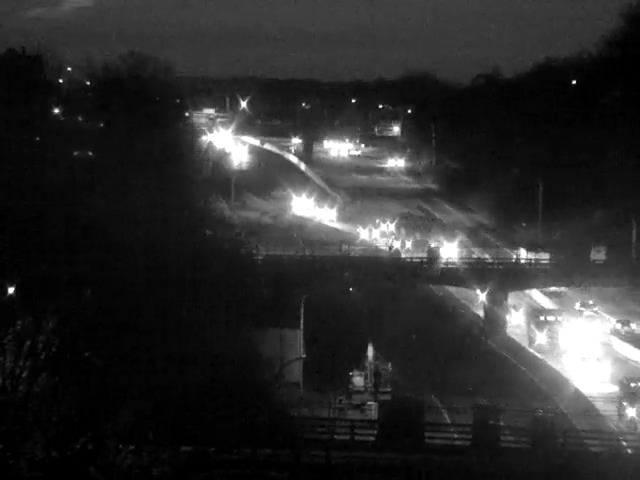Two eastbound lanes have been repurposed to carry westbound traffic across the Providence River over the Washington Bridge on I-195 in time for the Friday morning commute, the RI Department of Transportation (RIDOT) announced in a statement at 2:45am. The westbound side of the bridge had to be closed on an emergency basis due to structural failure. Originally expected to take weeks and then on Thursday promised to be opened this weekend, RIDOT beat their new deadline by several days.
“RIDOT will reopen most ramps that had been closed. However, the Gano Street off-ramp (Exit 1-D) will remain closed as will the on-ramps to I-195 West from Veterans Memorial Parkway and Taunton Avenue,” the statement said. Congestion should be reduced and is expected to improve as drivers become accustomed to the new traffic pattern, RIDOT said, but some motorists may find recommended detours more efficient for them.

While the eastbound capacity of the bridge had to be reduced to repurpose the two bypass lanes for westbound travel, the net benefit of increasing the westbound capacity above zero should reduce congestion overall. Prior to the emergency closure, the Washington Bridge carried 96,000 vehicles daily, RIDOT said.
Estimated travel times for each detour route are posted on the continuously updated Washington Bridge closure page at www.ridot.net/WashingtonBridgeClosure, RIDOT said. Alternative routes are listed as follows:
Local traffic in East Providence: Use the Henderson Bridge and rejoin I-195 West at Gano Street.
Southeast Massachusetts west of Fall River, MA: Take Massachusetts Exit 1 and follow Route 114A to Route 44 West. Follow onto Route 114 (Pawtucket Avenue) or Route 1A (Newport Avenue) to I-95. This is the preferred routes for trucks.
Southeast Massachusetts east of Fall River, MA (including traffic coming from Cape Cod and the New Bedford area): Take Massachusetts Exit 14-B to Route 24 North. Follow to I-495 North to I-95.
Engineers have deemed it safe to use the otherwise closed westbound bridge for light emergency vehicles, such as police cars and rescue ambulances, one at a time, but not for heavy vehicles such as fire trucks, RIDOT said.